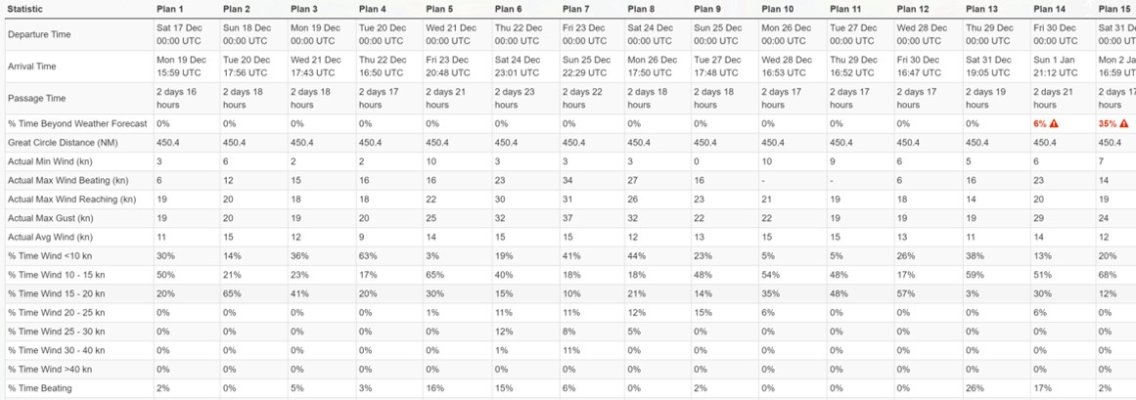Finnegus, your experience is highly instructive....but only if you go a bit deeper to understand why the forecast was either wrong or your interpretation of it was wrong. Here's a link to the
Ocean Prediction Center for North Pacific. These types of charts are posted at every harbormaster office along the north coast (specifically, the 24-hr and 48-hr Surface Analysis charts; and often the 72-hr chart). I have no idea why PredictWind routed you the way it did - doing a comparison would be a good learning experience.
Circa 2002, I remember running off Costa Rica (Pacific Side). No WxFax or SSB just a Sat Phone/email, so used a router. I got a forecast to expect "3-6 from the west." I replied "I assume you mean 3-6
inches. It's a millpond out here." I would have loved to know what the router saw.
For highly tactical decisions (and I consider deciding between 10nms-40nms off coast over a 24-hour period to be tactical), decision is onboard. I suppose a weather router could speculate on land/sea interactions, but I doubt that over a 24-hr period they could add much, if anything, to the NOAA/OPC weather charts. I'd certainly consult PredictWind, but would not be my primary. The use-case for PredictWind is not tactical runs but multi-day runs.
BTW - I routinely ran this coast within 3-5nms during daylight hours; out to 600-feet depths during nights. I found that being close to shoreline beat-down about have the seas compared to running further out. There were exceptions - when passing Columbia River, would loop 10-15 nms west to avoid traffic, debris and currents.
Good discussion -
Peter


